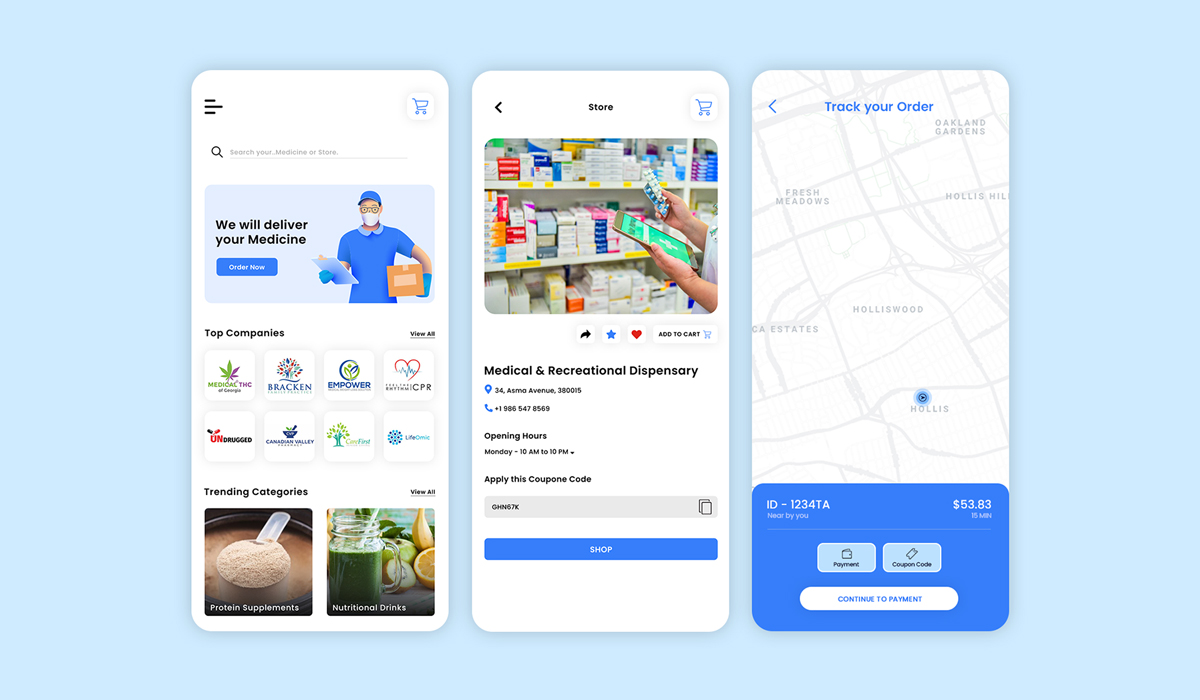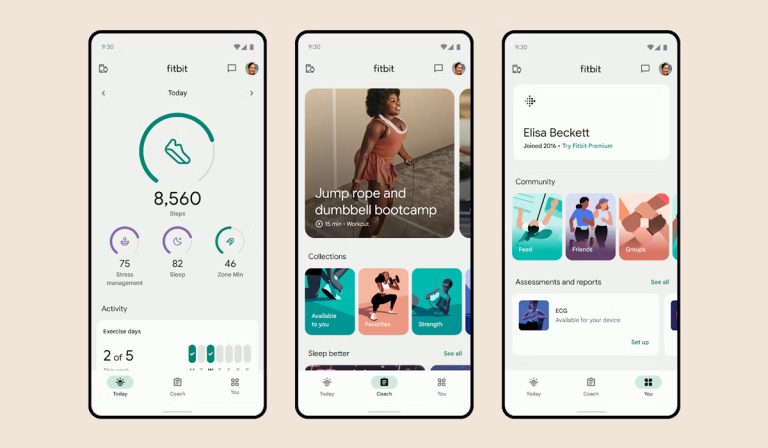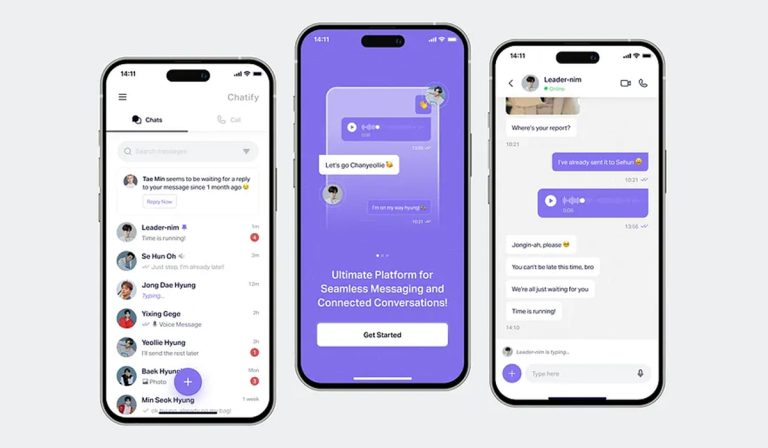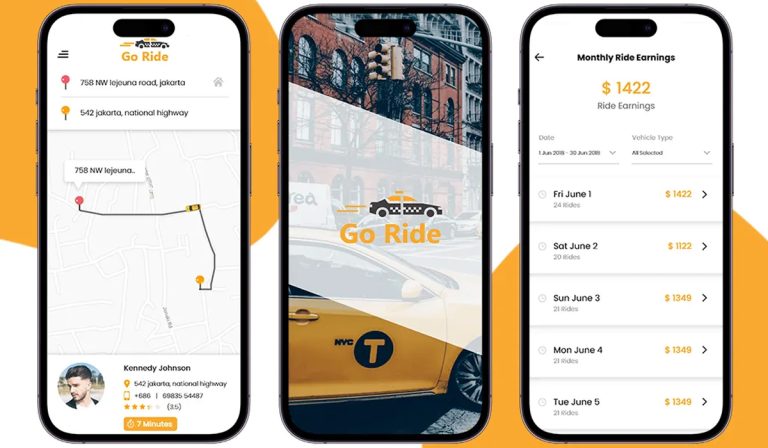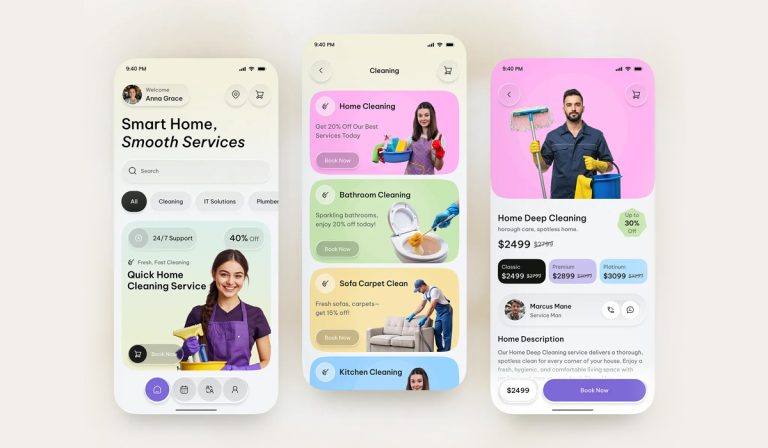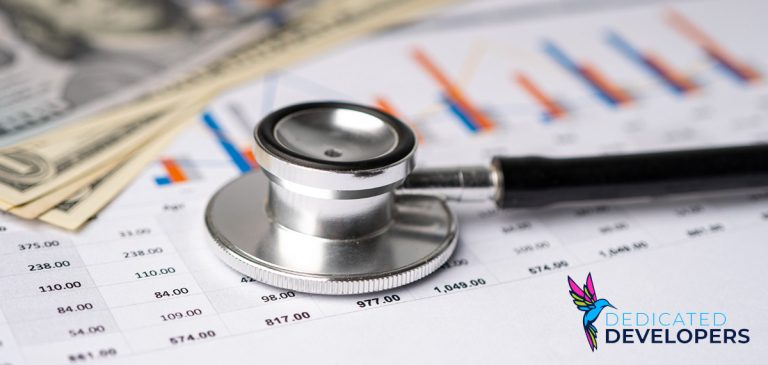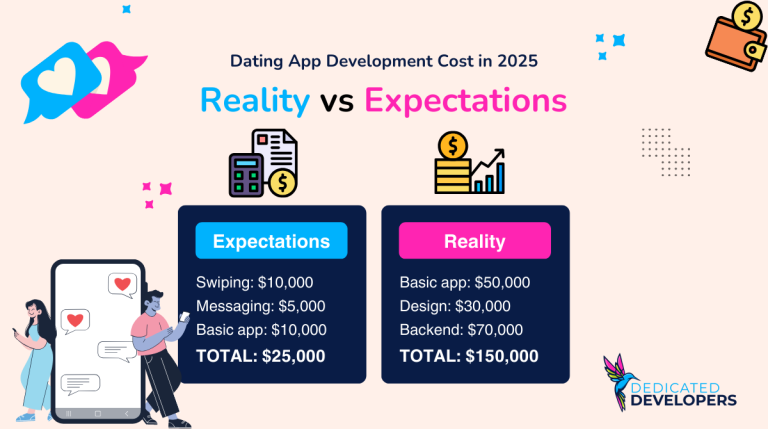Pharmacy Delivery App Development Cost in 2025: What Actually Drives the Price
My pharmacy app just needs prescription upload and delivery tracking.
How expensive could it be?
After building 300+ successful apps (including healthcare platforms serving over 2 million patients), we’ve learned that pharmacy delivery app development costs range from $80,000-$280,000 for a competitive platform. The difference between a failed experiment and a thriving business? Understanding that modern users expect CVS-level prescription accuracy, real-time insurance verification, same-day delivery reliability, and banking-grade security for their medical data—all while maintaining regulatory compliance across multiple jurisdictions without a single HIPAA violation.

Market Landscape
The $177 Billion Opportunity
The online pharmacy and medication delivery market is experiencing explosive growth, driven by aging populations, chronic disease management, telehealth adoption, and the permanent shift to digital healthcare accelerated by the pandemic:
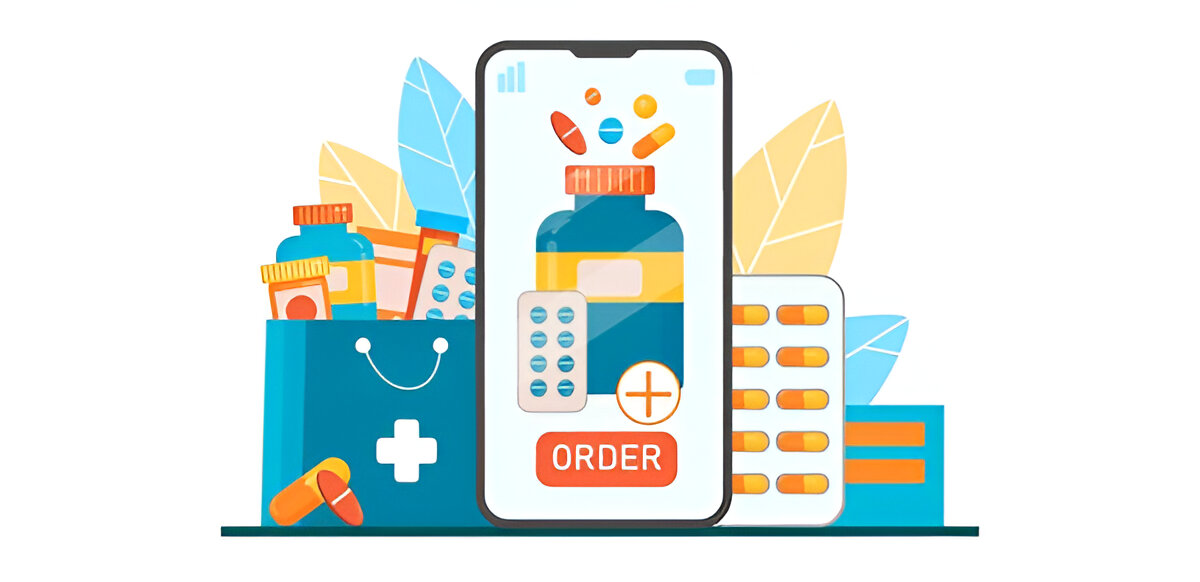
Market Fundamentals:
Current Market Size
$68 billion (2024)
Projected Market Size
$177 billion by 2030
Growth Rate
17.2% CAGR
Global Prescriptions
5.8+ billion prescriptions filled annually in US alone
Digital Penetration
23% of prescriptions now filled online (up from 8% in 2019)
Market Leaders & Their Success

$322 billion revenue (2023), 9,600+ locations, 50+ million app downloads, integrated with MinuteClinic telehealth

$139 billion revenue (2023), 8,600+ locations, 45+ million app downloads, same-day delivery in major markets

Launched 2020, estimated $1+ billion revenue, integrated with Prime, disrupting traditional pharmacy model

$1 billion acquisition, pre-sorted medication packaging, 50,000+ customers, full prescription management

$300 million funding, same-day delivery in major cities, 4.9/5 rating, courier hand-delivery model

$350 million funding, operates own pharmacies, 24/7 pharmacist access, 4.8/5 rating

Transparent pricing model, no insurance required, significant savings on generic medications

B2B platform, $242 million funding, powers pharmacy delivery for major brands
The pandemic permanently shifted prescription fulfillment online, with 67% of patients now comfortable with digital pharmacy services. Chronic disease management (diabetes, hypertension, mental health) requires consistent medication adherence where delivery apps excel. Insurance companies incentivize mail-order and delivery to reduce costs. Aging baby boomers need convenience for mobility issues. Prescription costs drive users to comparison shopping and discount platforms.
Emerging Opportunities:
- Medication adherence programs with insurance partnerships
- Chronic disease management platforms
- Specialty medication delivery (biologics, injectables)
- Veterinary medication delivery
- Compounded medication services
- Over-the-counter health product marketplace
- Telehealth integration with prescription fulfillment
- Medication therapy management (MTM) services
- Senior care and assisted living facility partnerships
- Medication synchronization (sync all prescriptions to one date)
- Prescription savings programs and discount cards
- International medication fulfillment
- Clinical trial medication delivery

Core Features (Market Entry Requirements)
Development Cost: $30,000-$55,000
- HIPAA-compliant registration with two-factor authentication
- Patient profile with medical history
- Allergy and medication sensitivity tracking
- Emergency contact information
- Insurance card storage (front and back)
- Doctor and pharmacy information
- Family member profiles under one account
- Biometric authentication (Face ID, fingerprint)
- Secure password recovery
- HIPAA consent and privacy agreements
- Prescription photo upload with OCR
- e-Prescription integration from doctor's office
- Manual prescription entry with pharmacist verification
- Manual prescription entry with pharmacist verification
- Medication list with images and information
- Dosage instructions and warnings
- Refill reminder notifications
- Transfer prescriptions from other pharmacies
- Prescription expiration tracking
- Drug interaction checker
- Search by medication name (brand and generic)
- Browse by condition/category
- Medication information database (uses, side effects, warnings)
- Generic alternative suggestions with savings
- Price comparison (with and without insurance)
- Medication images for verification
- Similar medication recommendations
- Over-the-counter product catalog
- Health and wellness product browsing
- Filter by: price, rating, availability, manufacturer
- Add prescriptions and OTC items to cart
- Insurance coverage preview
- Co-pay calculation
- Out-of-pocket cost estimation
- Coupon and discount code application
- Savings card integration (GoodRx, SingleCare)
- Prescription verification checklist
- Special handling requests (refrigeration needed)
- Delivery time selection
- Order notes for pharmacist
- Insurance claim submission and verification
- Real-time insurance eligibility checking
- Credit/debit card processing
- FSA/HSA payment acceptance
- Split payment (insurance + card for co-pay)
- Saved payment methods
- Digital receipts and EOB (Explanation of Benefits)
- Prescription discount cards
- Payment history and reimbursement forms
- Auto-refill payment automation
- Live chat with licensed pharmacist
- Video consultation option
- Medication counseling and education
- Side effect management guidance
- Drug interaction review
- Adherence support
- Dosage clarification
- Question and answer history
- Pharmacist availability schedule
- Emergency pharmacist contact
- Real-time order status updates
- Prescription verification progress
- Pharmacist review notifications
- Packing and quality check updates
- Out-for-delivery with GPS tracking
- Delivery driver contact (masked number)
- Delivery photo proof
- Signature for controlled substances
- Delivery instructions (leave at door, ring bell)
- Temperature monitoring for sensitive medications
- Customizable medication reminders
- Dose-by-dose notifications
- Refill reminder alerts
- Medication schedule calendar
- Missed dose tracking
- Adherence reports for doctors
- Family caregiver alerts
- Integration with smart pill bottles
- Refill gap identification
- Automatic refill ordering
- Multi-plan insurance comparison
- Prior authorization assistance
- Step therapy guidance
- Formulary checking (covered medications)
- Deductible tracking
- Out-of-pocket maximum monitoring
- Medicare Part D optimization
- Medicaid integration
- Coordination of benefits (multiple insurances)
- Insurance denial appeals support
- Sync all medications to single refill date
- Automatic coordination across prescriptions
- Reduced pickup/delivery trips
- Medication packaging by dose time
- Monthly medication reviews
- Synchronization calendar
- Pharmacy communication for sync setup
- Price comparison across pharmacies
- Manufacturer coupon integration
- Patient assistance program enrollment
- Generic substitution recommendations
- Therapeutic alternative suggestions
- GoodRx, SingleCare, RxSaver integration
- Savings tracking and reporting
- Price drop notifications
- Bulk order discounts (90-day supply)
- Specialty pharmacy integration
- Prior authorization tracking
- Financial assistance coordination
- Refrigerated delivery logistics
- Injection training resources
- Side effect monitoring
- Specialty pharmacist support
- Clinical program enrollment
- Compliance documentation
- Direct prescription from telehealth visit
- E-prescription workflow
- Doctor-pharmacist communication
- Prescription clarification requests
- Medication therapy management
- Chronic disease monitoring
- Virtual medication reviews
- Provider prescription history
- Multiple pharmacy partnerships
- Pharmacy selection by price/location
- Independent pharmacy support
- Chain pharmacy integration
- Specialty pharmacy network
- Compounding pharmacy access
- 24-hour pharmacy options
- Pharmacy rating and reviews
Premium Features (Revenue Drivers)
Development Cost: $45,000-$85,000
- Free delivery memberships
- Discounted medication pricing tiers
- Priority pharmacist access
- Free medication synchronization
- Automatic refills with discounts
- Family plan subscriptions
- Corporate wellness programs
- Senior citizen membership benefits
- Chronic condition management packages
- Premium customer support
- Multi-patient management dashboard
- Caregiver access and notifications
- Medication administration reminders
- Compliance tracking and reporting
- Video verification of medication taking
- Caregiver communication with pharmacist
- Emergency contact escalation
- Facility/nursing home delivery coordination
- Large-print and simplified interface
- Voice-activated medication reminders
- Medication adherence scoring
- Behavioral nudges and engagement
- Gamification (streaks, rewards)
- Health outcome tracking
- Doctor/insurance reporting
- Financial incentives for adherence
- Smart packaging integration (blister packs, bottles with sensors)
- Clinical intervention when needed
- Family member adherence alerts
- Employer-sponsored pharmacy benefits
- Group plan management
- Employee pharmacy access
- Claims data reporting
- Cost management tools
- Wellness program integration
- Open enrollment support
- Dependent coverage management
- HSA/FSA administration
- Telemedicine bundling
- Condition-specific medication regimens
- Blood pressure/glucose tracking integration
- Wearable device data sync
- Clinical program enrollment
- Care team coordination
- Symptom tracking and reporting
- Medication adjustment recommendations
- Provider collaboration tools
- Disease education resources
- Support group connections
- Pet profile management
- Veterinary prescription acceptance
- Pet medication catalog
- Dosage by pet weight/species
- Flavored medication options
- Pet supplement offerings
- Veterinary consultation
- Auto-ship for chronic conditions
- Multi-pet household management
Future-Proofing Features (Long-term Success)
Development Cost: $35,000-$65,000
- Predictive refill modeling
- Medication adherence prediction
- Drug interaction AI checking
- Personalized medication recommendations
- Pharmacy demand forecasting
- Delivery route optimization
- Customer lifetime value prediction
- Churn risk identification
- Price optimization algorithms
- Fraud detection for prescriptions
Advanced Analytics & Reporting
- Patient medication history analytics
- Adherence trend analysis
- Cost savings reporting
- Insurance utilization reports
- Pharmacy performance metrics
- Delivery efficiency tracking
- Customer satisfaction analytics
- Inventory demand forecasting
- Market basket analysis
- Prescription abandonment tracking
Blockchain for Security
- Prescription verification on blockchain
- Supply chain tracking
- Counterfeit medication prevention
- Patient consent management
- Medical record integrity
- Prescription transfer validation
- Audit trail immutability
- Smart contracts for refills
- Decentralized patient data
- Smart pill bottle connectivity
- Medication dispenser integration
- Wearable health device sync
- Smart home integration (Alexa, Google Home)
- Automated refill triggers
- Refrigeration monitoring devices
- Blood pressure/glucose monitor sync
- Voice-activated medication information
- Smart packaging notifications
Development Cost Breakdown

MVP Pharmacy Delivery App: $80,000-$130,000
Timeline: 5-7 months
Core Development Breakdown:
- HIPAA-compliant user authentication
- Prescription management system
- Pharmacist verification workflow
- Insurance verification API integration
- Payment processing (PCI-DSS compliant)
- Medication database integration
- Order management system
- Notification system
- Admin dashboard basics
- Secure database architecture
- Patient app (iOS + Android)
- Prescription upload with OCR
- Medication search and browsing
- Shopping cart and checkout
- Insurance card capture
- Payment integration
- Order tracking
- Medication reminders
- Push notifications
- Offline prescription list access
- Healthcare-focused user research
- HIPAA-compliant design patterns
- Wireframing for patient journey
- Visual design (trust-building aesthetic)
- Prescription upload flow optimization
- Senior-friendly interface considerations
- Accessibility compliance (WCAG)
- Usability testing with target demographics
- Security architecture review
- Data encryption (at rest and in transit)
- Secure authentication implementation
- Audit logging system
- Business Associate Agreements (BAA)
- Security penetration testing
- HIPAA compliance documentation
- Privacy policy and consent forms
- Functional testing
- Prescription workflow testing
- Payment and insurance testing
- Security testing
- Multi-device compatibility
- Performance testing
- Regulatory compliance verification
- Project coordination
- Sprint management
- App store compliance (medical app guidelines)
- Initial deployment
- Documentation
- e-Prescription systems (Surescripts)
- Insurance verification services
- Payment gateway (PCI-DSS compliant)
- SMS/Push notifications
- Drug database (First Databank, Medi-Span)
- Analytics and monitoring
Standard Pharmacy Platform: $135,000-$195,000
Timeline: 7-10 months
Enhanced Features Addition:
Advanced Insurance Integration: $20,000-$35,000
- Real-time insurance eligibility
- Formulary checking
- Prior authorization workflow
- Claims submission automation
- Multiple plan comparison
- Medicare Part D integration
- Medicaid processing
- Coordination of benefits
- Sync algorithm development
- Multi-prescription coordination
- Pharmacy communication system
- Automated sync scheduling
- Patient notification system
- Packaging coordination
- E-prescription reception
- Provider portal
- Doctor-pharmacist messaging
- Prescription clarification workflow
- Medication therapy management
- Video consultation integration
- Live chat system
- Video consultation platform
- Pharmacist scheduling
- Consultation history
- Clinical documentation
- Emergency consultation routing
- Price comparison engine
- Discount card integration (GoodRx, etc.)
- Manufacturer coupon system
- Patient assistance program enrollment
- Savings tracking and reporting
- Driver mobile app (iOS + Android)
- Order assignment and acceptance
- Navigation integration
- Delivery verification (photo, signature)
- Temperature monitoring alerts
- Controlled substance protocols
- Driver earnings dashboard
Premium Pharmacy Solution: $200,000-$280,000
Timeline: 10-14 months
Enterprise-Grade Features:
- Pharmacy partner portal
- Inventory synchronization
- Order routing intelligence
- Pharmacy performance analytics
- Commission management
- Quality control systems
- Regulatory compliance tracking
- Condition-specific workflows
- Health data integration (wearables, monitors)
- Clinical program management
- Care team coordination
- Symptom tracking
- Medication adjustment protocols
- Provider collaboration tools
- Business intelligence dashboard
- Adherence analytics
- Financial reporting
- Market analysis tools
- Predictive modeling
- Pharmacy performance metrics
- Customer segmentation
- Employer portal
- Benefits administration
- Group plan management
- Claims reporting
- Cost management tools
- Employee engagement features
- Integration with benefits platforms
AI & Machine Learning: $40,000-$70,000
- Refill prediction models
- Adherence risk scoring
- Drug interaction AI
- Personalized recommendations
- Fraud detection
- Price optimization
- Churn prediction
- Demand forecasting
Development Timeline Reality

Phase 1: Discovery & Strategic Planning (4-6 weeks)
Market Research & Regulatory Analysis (2-3 weeks):
- Target market research and patient personas
- Competitive analysis (CVS, Walgreens, Amazon, local pharmacies)
- State pharmacy board requirements by target market
- HIPAA compliance requirements analysis
- Insurance landscape and integration possibilities
- Pricing strategy and market positioning
- Revenue model validation
Technical Architecture & Compliance Planning (2-3 weeks):
- HIPAA-compliant system architecture design
- Prescription verification workflow design
- Insurance integration planning
- Security framework (encryption, access control)
- Technology stack selection optimized for healthcare
- Scalability and disaster recovery planning
- Business Associate Agreement (BAA) requirements
Feature Prioritization & Roadmap (1-2 weeks):
- MVP feature definition
- Patient journey mapping
- Pharmacist workflow design
- Development sprint planning
- Risk assessment (regulatory, technical, competitive)
- Resource allocation
- Budget finalization
Phase 2: Design & Prototyping (5-7 weeks)
User Experience Design (3-4 weeks):
- Patient persona development (seniors, chronic disease patients, busy professionals)
- Prescription upload journey optimization
- Insurance verification flow design
- Medication selection and checkout wireframing
- Senior-friendly and accessible design considerations
- Pharmacist workflow wireframing
- Usability testing with target users
Visual Design & Branding (2-3 weeks):
- Healthcare brand identity (trust, professionalism, care)
- Patient app UI design
- Pharmacist portal design
- Delivery driver app design (if applicable)
- Medical iconography and illustrations
- Accessibility-compliant design
- Style guide creation
Phase 3: Core Development (16-22 weeks)
Backend Infrastructure Development (7-9 weeks):
- HIPAA-compliant authentication system
- Prescription management and verification system
- Insurance verification integration
- Payment processing (PCI-DSS compliant)
- Medication database integration
- Order management and fulfillment workflow
- Pharmacist review queue
- Notification system (refill reminders, order updates)
- Admin and pharmacy dashboards
- Audit logging and compliance reporting
Mobile App Development (8-11 weeks):
- Patient app (iOS & Android)
- Prescription upload with OCR
- Medication search, browsing, information
- Insurance card capture and storage
- Shopping cart and checkout
- Payment integration
- Order tracking
- Medication reminders
- Push notifications
- Pharmacist chat/consultation
Integration & Testing (1-2 weeks):
- Backend-frontend integration
- Third-party service integration (e-prescribing, insurance, payment)
- End-to-end workflow testing
- Security testing
Phase 4: Advanced Features & Compliance (6-9 weeks)
Enhanced Functionality (4-6 weeks):
- Advanced insurance integration (formulary, prior auth)
- Medication synchronization
- Telehealth integration
- Prescription savings programs
- Delivery driver app and logistics
- Multi-pharmacy network (if applicable)
Regulatory Compliance & Security Hardening (2-3 weeks):
- HIPAA compliance audit and remediation
- Security penetration testing
- State pharmacy board compliance verification
- DEA controlled substance protocols (if applicable)
- Privacy policy and consent documentation
- Business Associate Agreements
- Compliance training materials
Phase 5: Quality Assurance & Launch Preparation (5-7 weeks)
Comprehensive Testing (3-4 weeks):
- Functional testing for all features
- Prescription workflow end-to-end testing
- Insurance verification testing (multiple scenarios)
- Payment processing verification
- Security and penetration testing
- Performance and load testing
- Accessibility compliance testing (WCAG)
- Multi-device compatibility
- Senior user testing (if target demographic)
Launch Preparation (1-2 weeks):
- App store submission (medical app compliance)
- Pharmacy partner onboarding (if network model)
- Pharmacist training and onboarding
- Customer support setup
- Legal and regulatory documentation
- Terms of service, privacy policy, HIPAA notices
- Marketing materials
Soft Launch & Monitoring (1 week):
- Limited user beta launch
- Real-time monitoring and error tracking
- User feedback collection
- Prescription workflow optimization
- Bug fixes and adjustments
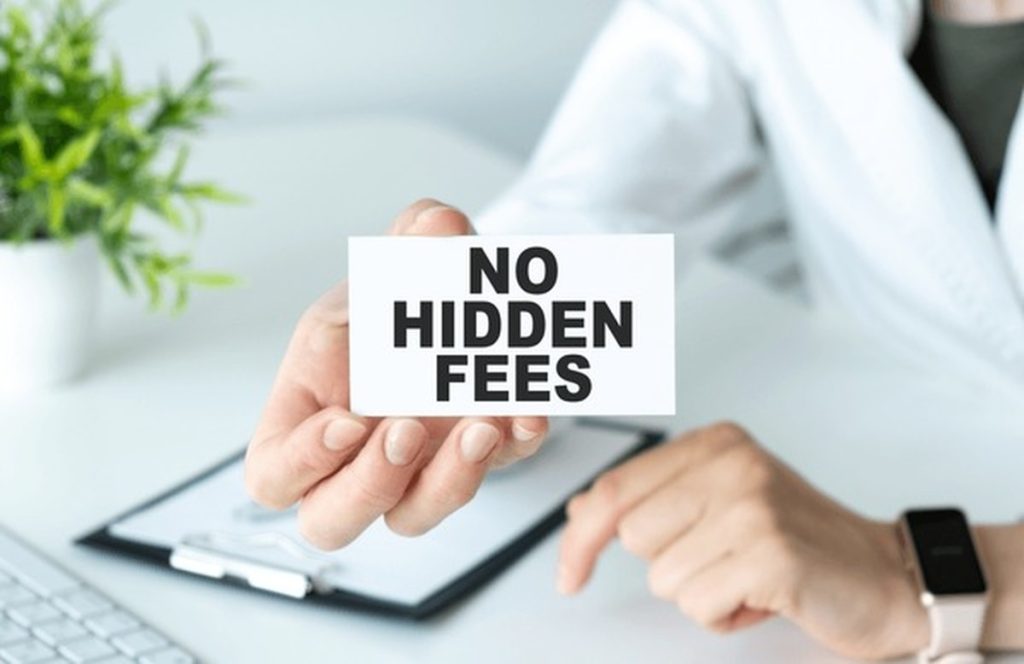
Infrastructure & Operational Costs:
Server & Hosting: $2,000-$12,000/month
- HIPAA-compliant cloud hosting (AWS HIPAA, Azure Healthcare)
- High-availability requirements (99.95%+ uptime)
- Database hosting with encryption and backup
- Disaster recovery and business continuity
- Load balancers and auto-scaling
- Security monitoring and intrusion detection
- Regular security patches and updates
Pharmacy Licensing & Legal: $20,000-$80,000 initial + $5,000-$20,000/month
- State pharmacy licenses (vary by state): $500-$5,000 per state
- Pharmacy ownership or partnership agreements
- DEA registration (for controlled substances): $731 (3 years)
- Legal consultation for pharmacy regulations
- Terms of service, privacy policy, BAA development
- State-by-state compliance research
- Ongoing legal consultation
Third-party Services: $2,500-$15,000/month
- e-Prescription system (Surescripts): $1,000-$4,000/month
- Insurance verification services: $500-$3,000/month (per transaction fees)
- Drug database licensing (First Databank, Medi-Span): $300-$1,500/month
- SMS gateway for reminders and OTP: $200-$1,000/month
- Push notifications: $100-$500/month
- Payment processing fees: 2.9% + $0.30 per transaction
- OCR service for prescription scanning: $200-$800/month
- Video consultation platform: $200-$1,000/month
Pharmacist Staffing: $8,000-$40,000/month
- Licensed pharmacists for prescription verification (required by law)
- Pharmacist consultation availability
- Pharmacy technicians for order processing
- Clinical pharmacist for medication therapy management
- 24/7 or extended hours coverage
- Pharmacist licensing maintenance
- Continuing education requirements
HIPAA Compliance & Security: $15,000-$40,000 initial + $3,000-$10,000/month
- Initial HIPAA compliance audit: $10,000-$25,000
- Security penetration testing: $5,000-$15,000 (annual)
- Ongoing security monitoring and management
- Annual compliance audits
- Cyber liability insurance: $3,000-$8,000/year
- Incident response planning and readiness
- Employee HIPAA training
Customer Support: $3,000-$15,000/month
- Extended hours support (critical for medication questions)
- Pharmacist support escalation
- Order issue resolution
- Insurance problem assistance
- Prescription transfer coordination
- Emergency medication needs
- Ticketing system and CRM
- Training and documentation
Marketing & User Acquisition: $10,000-$100,000+/month
- Patient acquisition campaigns (Google, Facebook, local)
- Doctor and provider outreach
- Pharmacy partnership marketing
- Senior community engagement
- Chronic disease patient targeting
- Referral program costs
- Brand awareness and trust-building
- Educational content creation
Why Budget Development Fails:
Pharmacy apps launched with $40,000-$60,000 budgets typically fail within 6-9 months when they realize they cannot legally operate without licensed pharmacists to verify every prescription, cannot process insurance claims without expensive verification services, and face immediate shutdown for HIPAA violations. Healthcare regulations require pharmaceutical-grade infrastructure—anything less results in legal liability, fines up to $50,000 per violation, and potential criminal charges. Real pharmacy operations require pharmacist labor costs, insurance integration fees, and compliance expenses that exceed the entire development budget of underfunded projects.
Technology Stack & Architecture

Frontend Technology Decisions
Mobile Development Approaches:
Native Development (iOS + Android): $50,000-$80,000
- Best performance for camera (prescription upload)
- Optimal security for health data
- Superior biometric authentication
- Platform-specific health data integration (Apple Health, Google Fit)
- Best offline functionality for medication lists
- Required for healthcare-grade apps
Cross-Platform (React Native/Flutter): $35,000-$60,000
- Faster development timeline
- Shared codebase reduces maintenance
- Good performance for most features
- Adequate security with proper implementation
- Suitable for MVP or budget-conscious launches
Hybrid Development: $25,000-$40,000
- Lowest initial cost
- Security concerns for PHI (Protected Health Information)
- Performance limitations
- Not recommended for production healthcare apps
Backend Infrastructure Requirements
Core Backend Services:
HIPAA-Compliant Infrastructure: AWS HIPAA or Azure Healthcare with BAA, encrypted databases, audit logging
Prescription Management: Secure document storage, OCR processing, verification workflow, pharmacist queue management
Insurance Integration: Real-time eligibility API, claims submission, formulary checking, prior authorization tracking
Payment Processing: PCI-DSS compliant gateway, FSA/HSA support, insurance co-pay processing, split payments
Database: PostgreSQL for transactions, MongoDB for prescription documents, Redis for caching (all encrypted)
Typical Backend Development Cost: $25,000-$45,000 for MVP
Scalability Considerations:
HIPAA Compliance Architecture: Encrypted data at rest and in transit, access controls, audit logs, disaster recovery
Geographic Distribution: Multi-region hosting for delivery areas, pharmacy partner coordination by location
High Availability: 99.95%+ uptime (patients depend on medications), automated failover, backup systems
Prescription Processing Pipeline: Queue management for pharmacist review, automated verification where allowed, prescription expiration tracking
Insurance Integration Resilience: Fallback for insurance system downtime, caching, retry logic, manual override capabilities
Critical Third-Party Integrations
Essential Services:
e-Prescribing & Prescription Management:
- Surescripts (industry standard, 90%+ provider coverage)
- RxHub (prescription benefit data)
- DrFirst (e-prescribing and messaging)
- CoverMyMeds (prior authorization)
Insurance Verification & Processing:
- Change Healthcare (claims and eligibility)
- Availity (multi-payer portal)
- PokitDok (insurance API)
- Relay Health (eligibility verification)
Drug Information Databases:
- First Databank (comprehensive drug data)
- Medi-Span (Wolters Kluwer)
- Micromedex (clinical information)
- DailyMed (FDA drug labels)
Payment Processing:
- Stripe (PCI-DSS, supports FSA/HSA)
- Square (easy setup, healthcare friendly)
- Authorize.net (established healthcare presence)
Communication:
- Twilio (HIPAA-compliant, BAA available)
- Firebase Cloud Messaging (push notifications)
- SendGrid (HIPAA-compliant email)
OCR for Prescription Scanning:
- Google Cloud Vision API
- AWS Textract
- Microsoft Azure Computer Vision
- Specialized medical OCR services
Delivery & Logistics:
- Google Maps Platform (routing, tracking)
- Onfleet (delivery management)
- Route4Me (route optimization)
- Temperature monitoring IoT integration
Regional Cost Analysis

North America (Premium Quality, Regulatory Expertise)
United States & Canada
Hourly Rate: $120-$200
Project Cost: $130,000-$280,000
Timeline: Standard to faster
Advantages:
- Deep understanding of US healthcare regulations (HIPAA, state pharmacy boards)
- Experience with insurance integration (complex US system)
- Native communication, same timezone
- Knowledge of e-prescribing standards (Surescripts)
- Understanding of DEA controlled substance regulations
- FDA compliance expertise
- Established relationships with healthcare APIs
Eastern Europe (Excellent Value, Growing Healthcare Expertise)
Poland, Ukraine, Romania
Hourly Rate: $45-$90
Project Cost: $80,000-$180,000
Timeline: Standard
Advantages:
- Strong technical skills in secure systems
- Good English communication
- Cost-effective without quality compromise
- Experience with GDPR (translates to HIPAA principles)
- Growing healthcare software expertise
Considerations:
- Less familiarity with US healthcare regulations
- May need US-based regulatory consultant
- Insurance integration requires US expertise
- Time zone manageable (6-9 hours difference)
Asia (Cost-Effective, Requires Strong Oversight)
India, Vietnam, Philippines
Hourly Rate: $25-$60
Project Cost: $50,000-$130,000
Timeline: Longer due to communication and regulatory learning curve
Advantages:
- Lowest development costs
- Large healthcare IT talent pool (India especially)
- Experience with high-volume systems
- 24/7 development potential
Considerations:
- Limited understanding of US healthcare regulations
- Significant timezone challenges (12+ hours)
- HIPAA compliance requires extensive training
- Insurance integration complexity
- Less familiarity with US pharmacy operations
- Quality variation, careful vetting required
Hybrid Approach (Recommended for Healthcare)
Distributed Team Strategy:
Team Structure:
- US-based regulatory compliance and healthcare expertise
- US-based integration with insurance and e-prescribing systems
- Eastern European development team for core platform
- Asian QA, testing, and support operations
- Centralized DevOps and security team
Cost Savings: 30-40% vs full US team
Quality: Maintained through strong project management and US oversight
Typical Hybrid Cost: $85,000-$190,000 for full platform
Why This Works for Healthcare:
- Critical regulatory and compliance expertise where needed (US)
- Cost optimization for feature development
- Balance security requirements with budget
- Maintains HIPAA compliance through proper oversight
Monetization & ROI Analysis

Proven Revenue Models
Delivery Fee Model (Most Common – 60% of platforms):
- Delivery Fee per Order: $4.99-$9.99
- Express/Same-Day Premium: +$5-$15
- Subscription for Free Delivery: $9.99-$19.99/month
- Average Revenue per Delivery: $5-$12
Pharmacy Margin Model (Traditional – 75% of platforms):
- Prescription Margin: 10-25% markup on medications
- Generic Medication Higher Margins: 25-40%
- OTC Product Margins: 15-35%
- Health Product Marketplace: 20-40% commission
- Average Margin per Prescription: $8-$25
Subscription Model (Growing – 35% of platforms):
- Basic Membership: $9.99-$14.99/month (free delivery, discounts)
- Premium Membership: $19.99-$29.99/month (free delivery, extra discounts, priority service)
- Family Plans: $24.99-$39.99/month
- Senior Care Plans: $29.99-$49.99/month
- Chronic Disease Management: $49.99-$99.99/month
Insurance & PBM Partnerships:
- Preferred Pharmacy Network Status
- Mail-Order Alternative Contracts
- Medication Adherence Program Fees: $5-$15 per patient/month
- Medication Therapy Management (MTM) Reimbursement: $40-$150 per session
- Quality Metric Bonuses
Additional Revenue Streams:
- OTC and Health Product Marketplace: 15-30% commission
- Telehealth Consultation Fees: $20-$50 per consultation (split with provider)
- Medication Adherence Programs: $10-$30/patient/month (paid by insurers)
- Corporate Wellness Programs: $5-$15/employee/month
- Compounding Services: Premium pricing, 30-50% margins
- Specialty Medication Delivery: Higher fees, $15-$30 per delivery
- Advertising (pharmaceutical companies): $5-$20 CPM
- Patient
Patient Assistance Program Enrollment Fees: $25-$75 per enrollment (paid by manufacturers)
- Data Analytics Services (Anonymized): Research partnerships with pharma companies
- Veterinary Medication Delivery: 20-35% margins, growing market
Revenue Benchmarks by App Maturity
Months 1-6 (Launch Phase):
- Active Customers: 200-1,500 patients
- Monthly Prescriptions: 400-3,000 prescriptions
- Average Prescription Value: $35-$65
- Average Margin: 15-20%
- Delivery Fees: $5-$8 per order
- Monthly Revenue: $8,000-$55,000
- Primary Goal: Patient acquisition and retention
Months 6-18 (Growth Phase):
- Active Customers: 1,500-10,000 patients
- Monthly Prescriptions: 3,000-20,000 prescriptions
- Average Prescription Value: $40-$75
- Average Margin: 18-23%
- Delivery Fees: $6-$10 per order
- Monthly Revenue: $55,000-$450,000
- Primary Goal: Market penetration and insurance partnerships
Months 18-36 (Maturity Phase):
- Active Customers: 10,000-100,000+ patients
- Monthly Prescriptions: 20,000-200,000+ prescriptions
- Average Prescription Value: $45-$85
- Average Margin: 20-25%
- Delivery Fees: $7-$12 per order
- Monthly Revenue: $450,000-$5,000,000+
- Primary Goal: Profitability, specialty services, geographic expansion
Months 36+ (Scale Phase):
- Active Customers: 100,000-1,000,000+ patients
- Monthly Prescriptions: 200,000-2,000,000+ prescriptions
- Average Prescription Value: $50-$95
- Average Margin: 22-28%
- Subscription Revenue: Growing percentage
- Monthly Revenue: $5,000,000-$50,000,000+
- Primary Goal: Market dominance, acquisition target valuation
User Acquisition Cost Analysis
Patient Acquisition Cost (PAC):
- Digital advertising (Google, Facebook): $12-$35 per patient
- Prescription transfer incentives: $20-$50 per patient
- Referral programs: $15-$40 per patient (lower cost, higher quality)
- Doctor office partnerships: $25-$60 per patient
- Senior community outreach: $30-$70 per patient
- Chronic disease targeting: $40-$80 per patient (higher LTV justifies cost)
- Average PAC: $20-$50 per active patient
Patient Lifetime Value (LTV) Calculations:
- Average Patient Lifespan: 24-48 months (longer for chronic disease patients)
- Prescriptions per Patient per Month: 1.5-3.5 prescriptions
- Average Margin per Prescription: $8-$25
- Delivery Fees per Month: $5-$15
- Monthly Revenue per Patient: $20-$95
- Patient LTV: $480-$4,560
Chronic Disease Patient Segments (Higher Value):
- Diabetes patients: 4-6 medications, 36+ month lifespan, LTV: $2,500-$6,000
- Hypertension patients: 2-4 medications, 48+ month lifespan, LTV: $1,800-$4,800
- Mental health patients: 1-3 medications, 30+ month lifespan, LTV: $1,200-$3,600
- Multiple chronic conditions: 6-12 medications, LTV: $5,000-$12,000+
Target Ratios:
- Patient LTV:PAC: 15:1 minimum (healthcare has high retention)
- Chronic Disease Patient LTV:PAC: 25:1 minimum
Break-Even Analysis
Conservative Growth Scenario:
- Development Investment: $110,000
- Monthly Operating Costs: $18,000-$35,000
- Patient Growth Rate: 12-18% monthly
- Average Margin per Prescription: $12
- Delivery Fee: $6
- Break-Even Timeline: 20-28 months
- Required Monthly Prescriptions: 8,000-15,000 prescriptions
Moderate Growth Scenario:
- Development Investment: $160,000
- Monthly Operating Costs: $30,000-$55,000
- Patient Growth Rate: 20-30% monthly
- Average Margin per Prescription: $15
- Delivery Fee: $8
- Break-Even Timeline: 16-22 months
- Required Monthly Prescriptions: 12,000-25,000 prescriptions
Aggressive Growth Scenario:
- Development Investment: $220,000
- Monthly Operating Costs: $50,000-$95,000
- Patient Growth Rate: 35-50% monthly
- Average Margin per Prescription: $18
- Delivery Fee: $10
- Subscription Revenue: 15-25% of customers
- Break-Even Timeline: 12-18 months
- Required Monthly Prescriptions: 20,000-45,000 prescriptions
Key Success Factors:
- Prescription refill rate (chronic patients have 90%+ refill rates)
- Patient retention (sticky business model)
- Average prescriptions per patient
- Insurance network participation (higher reimbursement)
- Medication adherence programs (insurer payments)
- Operational efficiency (pharmacy automation)
- Geographic density (delivery cost reduction)
Success Stories & Case Studies
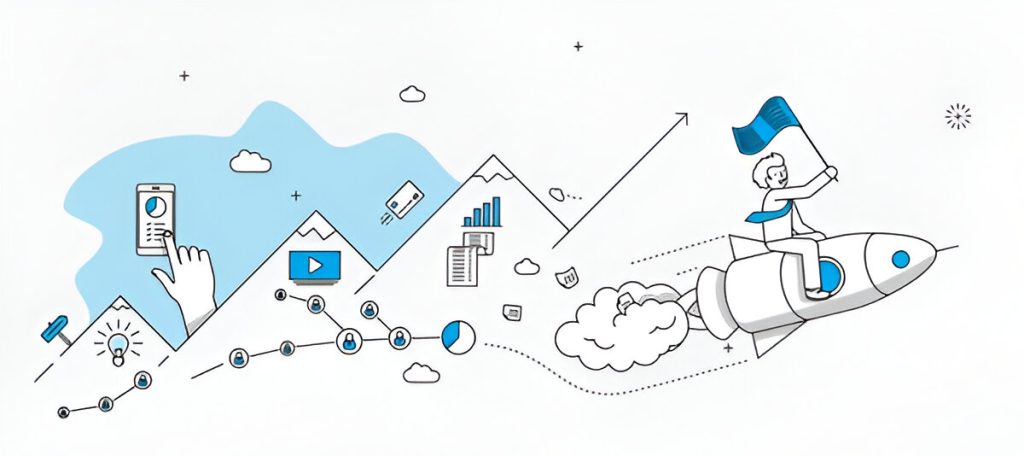
Case Study 1: Regional Pharmacy Delivery Platform
Client Background: Independent pharmacy chain launching delivery app in mid-sized metro area (population 800K)
Investment: $145,000 over 9 months
Timeline: MVP in 6 months, full platform in 9 months
Key Metrics:
- Patient Growth: 0 to 8,500 active patients in 18 months
- Monthly Prescriptions: 12,000+ prescriptions at month 20
- Market Share: 22% of local prescription delivery market
- Monthly Revenue: $165,000 by month 22
- Average Prescription Value: $52
- Patient Retention: 78% after 12 months (excellent for pharmacy)
- Refill Rate: 85% for chronic disease patients
Success Factors:
- Existing Pharmacy Infrastructure: Leveraged 6 physical locations
- Insurance Networks: Already credentialed with major insurers
- Senior Focus: Designed for 65+ demographic (largest pharmacy users)
- Medication Synchronization: Free sync service drove loyalty
- Personal Service: Same-day delivery with pharmacist phone calls
- Local Trust: 40+ years of community presence
Lessons Learned:
- Existing pharmacy operations provide huge advantage
- Senior-friendly design critical (large buttons, simple navigation)
- Personal pharmacist relationships drive retention
- Medication synchronization increases lifetime value
- Local reputation overcomes national brand awareness
- Insurance network participation essential for volume
Case Study 2: Specialty Medication Delivery Platform
Client Background: Specialty pharmacy for high-cost biologics and injectable medications
Investment: $185,000 over 11 months
Timeline: Beta in 7 months, full launch in 11 months
Key Metrics:
- Patient Network: 2,800 specialty patients
- Monthly Prescriptions: 1,400 high-value prescriptions
- Average Prescription Value: $3,200 (specialty medications)
- Monthly Revenue: $420,000 by month 24
- Patient Satisfaction: 4.9/5.0 (white-glove service)
- Prior Authorization Success: 94%
- Clinical Outcomes: 15% improvement in adherence
Success Factors:
- Clinical Support: Dedicated specialty pharmacists for each patient
- Financial Assistance: Patient assistance program enrollment saved patients $1.2M annually
- Cold Chain Logistics: Temperature-monitored delivery for biologics
- Injection Training: Video tutorials and nurse support
- Prior Authorization Expertise: Dedicated team for insurance approvals
- Disease Management: Chronic condition monitoring and support
Lessons Learned:
- Specialty medications have exceptional margins (20-30%)
- Patient assistance programs critical for affordability
- Clinical support drives adherence and outcomes
- Prior authorization expertise reduces abandonment
- White-glove service justifies premium pricing
- Long patient lifetime value (3-5 years average)
Case Study 3: Telehealth-Integrated Pharmacy App
Client Background: Telehealth platform adding prescription fulfillment
Investment: $165,000 over 10 months
Timeline: MVP in 6 months, full integration in 10 months
Key Metrics:
- Telehealth-Pharmacy Conversion: 68% of telehealth patients
- Active Patients: 15,000 patients in 20 months
- Monthly Prescriptions: 18,000 prescriptions
- Average Prescription Value: $45
- Monthly Revenue: $285,000 by month 22
- Same-Day Delivery: 75% of orders
- Patient Satisfaction: 4.7/5.0
Success Factors:
- Seamless Integration: e-Prescription directly from telehealth visit
- Immediate Fulfillment: Prescription filled during or after consultation
- Convenience: One-stop healthcare solution
- Mental Health Focus: Strong mental health telehealth drove recurring prescriptions
- Insurance Integration: Both medical and pharmacy benefits
- Subscription Model: $29/month for unlimited telehealth + free delivery
Lessons Learned:
- Telehealth integration creates powerful value proposition
- Mental health prescriptions very recurring (90%+ refill rate)
- Integrated experience reduces patient drop-off
- Subscription model generates predictable revenue
- Same-day delivery critical for acute prescriptions
- Marketing synergy between services reduces CAC by 40%
Case Study 4: Senior Care & Medication Management Platform
Client Background: Senior care coordination service with medication management
Investment: $155,000 over 10 months
Timeline: MVP in 6 months, full platform in 10 months
Key Metrics:
- Senior Patients: 6,500 patients (average age 74)
- Caregiver Users: 8,200 family caregivers
- Monthly Prescriptions: 32,000 prescriptions (high per-patient average)
- Average Prescriptions per Patient: 4.9 prescriptions
- Monthly Revenue: $195,000 by month 20
- Adherence Improvement: 38% better than national average
- Caregiver Satisfaction: 4.8/5.0
Success Factors:
- Caregiver Features: Family members manage medications remotely
- Medication Synchronization: All meds delivered same day monthly
- Pre-sorted Packaging: Organized by date and time
- Large Print: Senior-friendly interface
- Voice Integration: Alexa reminders and reordering
- Wellness Checks: Delivery drivers trained to check on seniors
- Insurance Coordination: Medicare Part D optimization
Lessons Learned:
- Seniors take more medications (higher revenue per patient)
- Caregiver involvement drives adherence and retention
- Medication packaging by dose time highly valued
- Voice integration critical for technology adoption
- Personal delivery touch points build trust
- Medicare Part D navigation complex but valuable
- Partnership with senior living facilities accelerates growth
Case Study 5: Discount Pharmacy Membership App
Client Background: Cash-pay discount pharmacy challenging insurance model
Investment: $135,000 over 9 months
Timeline: MVP in 5 months, full platform in 9 months
Key Metrics:
- Membership Base: 28,000 members in 18 months
- Monthly Prescriptions: 35,000 prescriptions
- Average Prescription Savings: 62% vs retail
- Monthly Revenue: $385,000 (membership + margins) by month 20
- Membership Retention: 83% annual renewal
- Word-of-Mouth Growth: 55% from referrals
Success Factors:
- Transparent Pricing: Clear costs, no insurance games
- Deep Discounts: Generic medications at cost + 15%
- Membership Model: $9.99/month or $99/year
- No Insurance Required: Appeals to uninsured, high-deductible
- Price Comparison: Shows savings vs major pharmacies
- Generic Focus: 85% of prescriptions generic
- Fast Delivery: Free delivery for members
Lessons Learned:
- Large uninsured/underinsured market (30+ million Americans)
- Transparency builds trust and loyalty
- Generic medications drive margins while providing savings
- Membership model creates predictable revenue
- Word-of-mouth powerful for value-focused consumers
- Marketing focuses on “no insurance hassle” message
- Lower prescription values offset by higher volume
Cost-Related Questions
Q: What's the minimum budget needed for a legally compliant pharmacy delivery app?
A: $80,000-$120,000 for a viable MVP that can legally operate and handle real patients. This includes HIPAA-compliant infrastructure, licensed pharmacist verification workflow, insurance integration basics, secure prescription management, and 5-7 months development. Apps built for less typically cannot operate legally—lacking required pharmacist oversight ($8,000-$15,000/month labor cost alone), HIPAA compliance ($15,000-$25,000 initial setup), and insurance verification systems ($500-$3,000/month). Pharmacy is heavily regulated; shortcuts lead to fines, legal liability, and shutdown.
Q: Why do pharmacy app costs vary so dramatically?
Q: What drives pharmacy app costs higher than regular e-commerce?
A: Pharmacy apps require pharmaceutical-grade security and HIPAA compliance (PHI protection), licensed pharmacist verification for every prescription (labor cost), complex insurance integration (eligibility, formulary, claims, prior auth), e-prescribing system integration, controlled substance DEA compliance, state pharmacy board licensing per state, prescription verification workflows, drug interaction checking, refrigerated delivery logistics for temperature-sensitive medications, and significantly higher liability. Healthcare data breaches cost $9.23M on average—6x higher than other industries.
Q: Are there ways to reduce costs without compromising legal compliance?
A: Yes, through strategic MVP scoping while maintaining compliance. Start in a single state (one pharmacy license), begin with cash-pay only before insurance integration, partner with existing licensed pharmacy rather than building your own, use basic prescription upload before OCR automation, implement standard delivery before same-day service, focus on maintenance medications before controlled substances, launch with web app before native mobile apps, and use established e-prescribing platforms. These strategies can save $40,000-$70,000 while maintaining legal operation. However, never cut corners on HIPAA compliance, pharmacist verification, or security—these are non-negotiable.
Timeline and Development Process
Q: How long does it realistically take to build a pharmacy delivery app?
A: 5-7 months for MVP, 8-11 months for competitive platform with insurance integration and medication sync, 11-14 months for advanced chronic disease management features. Timeline depends on regulatory approval processes (pharmacy licenses take 2-4 months), insurance credentialing (3-6 months), e-prescribing integration (4-8 weeks), HIPAA compliance implementation, and pharmacist hiring/training. Beware of promises under 4 months—healthcare compliance, insurance integration, and state licensing cannot be rushed without cutting dangerous corners.
Q: Can we launch with basic features and add advanced ones later?
A: Yes, highly recommended for pharmacy apps. Launch with prescription upload, basic verification, cash payments, and standard delivery. Add insurance integration after proving model (saves $20,000-$40,000 initially), add medication synchronization once you have recurring patients, add telehealth integration after establishing pharmacy operations, add specialty medications after mastering maintenance drugs. However, core architecture (HIPAA-compliant infrastructure, secure database design, audit logging, pharmacist workflow) must be built correctly from day one or becomes prohibitively expensive to rebuild. You cannot retrofit HIPAA compliance.
Q: What happens if development takes longer than estimated?
A: Timeline extensions very common (40-50% of pharmacy projects) due to: insurance integration complexity, state licensing delays, HIPAA compliance audit requirements, e-prescribing certification process, pharmacist workflow optimization, prescription verification testing, and regulatory approvals. Partner with developers experienced in healthcare, build realistic timelines with 25% buffer for regulatory processes, maintain clear communication about compliance requirements, phase launches (single state before multi-state), and budget for licensing delays. Insurance credentialing alone can add 2-4 months.
Technology and Architecture
Q: Should we build native apps or use cross-platform development?
A: For production pharmacy apps, native development for iOS and Android is recommended for optimal security, performance, and healthcare data integration. Camera functionality for prescription uploads, biometric authentication for PHI access, health data integration (Apple Health, Google Fit), and secure local data storage are superior with native. Cross-platform (React Native, Flutter) can work for MVP or budget-conscious launches ($30,000-$50,000 savings) with proper security implementation, but plan for potential native migration as you scale and security requirements increase.
Q: What backend infrastructure do we need for a pharmacy delivery app?
A: HIPAA-compliant cloud infrastructure: AWS HIPAA or Azure Healthcare with Business Associate Agreement, encrypted databases (at rest and in transit), secure prescription document storage, pharmacist verification workflow system, insurance verification API integration, payment processing (PCI-DSS + HIPAA compliant), medication database integration, comprehensive audit logging (required by HIPAA), automated backup and disaster recovery, intrusion detection, and 99.95%+ uptime. Budget $2,000-$8,000/month initially, scaling to $8,000-$35,000/month as you grow to 10,000+ monthly prescriptions. Never compromise on security or compliance to save hosting costs.
Q: How important is insurance integration?
A: Critical for success in US market. 91% of Americans have health insurance; 89% of prescriptions use insurance. Without insurance integration, you limit addressable market to 9-11% of potential customers. Basic integration (eligibility checking) costs $15,000-$25,000 development + $500-$2,000/month services. Full integration (claims processing, formulary checking, prior authorization) costs $30,000-$55,000 development + $2,000-$8,000/month. Insurance integration typically increases patient acquisition by 8-10x and average prescription value by 3-5x (patients use insurance for expensive brand medications). ROI is immediate and substantial.
Q: Can we use free drug databases?
A: Not recommended for production. FDA’s DailyMed is free but limited (lacks dosing, interactions, pricing). Professional drug databases (First Databank, Medi-Span, Micromedex) cost $300-$1,500/month but provide: comprehensive drug information, drug interaction checking, allergy cross-checking, dosing guidelines, pricing data, images for verification, and regular updates. This data prevents medication errors, reduces liability, and provides professional-grade information expected by patients and pharmacists. The cost is essential insurance against lawsuits and poor outcomes. One prevented drug interaction lawsuit pays for decades of subscription.
Business Model and ROI
Q: How much revenue can a successful pharmacy delivery app generate?
A: Successful platforms generate $50,000-$5,000,000+ monthly depending on patient base and prescription volume. Revenue scales with prescriptions: 5,000 monthly prescriptions at $50 average value with 20% margin + $7 delivery fee = $85,000 monthly revenue. Growth to 50,000 monthly prescriptions = $850,000 monthly revenue. Variables include: geographic market, patient demographics (seniors use more medications), chronic disease focus (higher prescriptions per patient), insurance network participation, specialty medication inclusion (higher margins), and subscription revenue (predictable recurring income).
Q: What's the typical return on investment timeline?
A: 20-28 months for break-even in conservative scenarios, 16-22 months with moderate growth, 12-18 months with aggressive growth and favorable conditions. ROI depends on: patient acquisition costs ($20-$50 per patient), prescription refill rates (chronic patients 85%+ refill), insurance network participation (higher reimbursement), operational efficiency (pharmacy automation), and geographic density (lower delivery costs). Pharmacy is sticky business—once patients transfer prescriptions, they rarely leave (78%+ annual retention). Successful apps achieve profitability at 8,000-15,000 monthly prescriptions depending on costs and margins.
Q: What ongoing costs should we budget for?
A: Monthly costs include: infrastructure and HIPAA-compliant hosting ($2,000-$12,000), third-party services especially e-prescribing and insurance verification ($2,500-$15,000), licensed pharmacist staffing (required by law, $8,000-$40,000 for verification, consultation, oversight), customer support including medication questions ($3,000-$15,000), delivery operations ($3,000-$20,000 depending on volume and model), marketing and patient acquisition ($10,000-$100,000+), insurance and legal ($5,000-$20,000), and maintenance/updates ($4,000-$15,000). Total: $37,500-$237,000/month depending on scale and market. Pharmacist labor is largest fixed cost—cannot legally operate without licensed pharmacist verification.
Regulatory and Legal
Q: What licenses and permits do we need?
A: Requirements vary significantly by state and business model: pharmacy license in each state you operate ($500-$5,000 per state, 2-4 months processing), DEA registration if handling controlled substances ($731 for 3 years), business license, HIPAA compliance (no license but required), pharmacist licenses for all pharmacists (individual state licenses), pharmacy technician registration (some states), and delivery/courier licenses (some jurisdictions). Some states require physical pharmacy location; others allow “telepharmacy.” Budget $10,000-$40,000 for initial multi-state licensing and $15,000-$30,000 for legal consultation on pharmacy regulations. Research target states thoroughly—requirements vary dramatically.
Q: Do I need to own a pharmacy or can I partner?
A: Partnership model often better for startups. You can partner with existing licensed pharmacies (they fulfill, you provide technology and delivery) through pharmacy services administrative organization (PSAO) agreements. Advantages: no pharmacy licensing costs, no pharmacist staffing, existing insurance networks, immediate launch capability, lower capital requirements ($50,000-$100,000 savings). Disadvantages: lower margins (typically 30-50% revenue share with pharmacy partner), less control over operations, dependency on partner. Owning pharmacy provides higher margins but requires: pharmacy licenses, pharmacist hiring, insurance credentialing (3-6 months), inventory management, and significantly higher capital ($200,000-$500,000+).
Q: What insurance is required?
A: Comprehensive coverage required: professional liability insurance (pharmacist errors & omissions, $5,000-$15,000/year for $1M-$2M coverage), general liability insurance ($2,000-$6,000/year), cyber liability insurance (HIPAA breach protection, $3,000-$10,000/year for $1M coverage), product liability (medication harm, included in professional liability), commercial auto insurance if own delivery fleet, and workers compensation (if employees). Expect $12,000-$35,000/year total depending on prescription volume and coverage levels. Cyber liability essential—average healthcare data breach costs $9.23M; insurance typically covers breach notification, legal fees, settlements, and regulatory fines.
Q: How do we handle HIPAA compliance?
A: HIPAA compliance is non-negotiable and complex. Requirements include: encrypted data storage and transmission, access controls (role-based permissions, audit logs of who accessed what data when), Business Associate Agreements (BAA) with all vendors handling PHI, breach notification procedures, employee training (annual HIPAA training required), physical safeguards (secure servers, access controls), technical safeguards (encryption, firewalls, intrusion detection), and privacy policies. Budget $15,000-$30,000 for initial HIPAA compliance implementation, $3,000-$8,000/year for ongoing compliance audits. Work with healthcare technology attorneys and HIPAA compliance consultants. Violations: $100-$50,000 per violation, up to $1.5M per year per violation category. Criminal penalties include jail time for willful neglect.
Pharmacy Operations
Q: Do we need licensed pharmacists on staff?
A: Yes, absolutely required by law. Every prescription must be verified by a licensed pharmacist before dispensing—federal and state law, no exceptions. You need: pharmacist-in-charge (PIC, responsible for pharmacy operations, required for pharmacy license), staff pharmacists for prescription verification (volume-dependent, one pharmacist can verify ~150-200 prescriptions per day), and clinical pharmacists for medication therapy management and consultations (optional but valuable). Budget $90,000-$140,000/year per full-time pharmacist depending on location. Part-time and contract pharmacists available ($60-$85/hour). Cannot cut this cost—it’s the law. Some startups use telepharmacy models with remote pharmacist verification where state laws allow.
Q: How do we ensure prescription accuracy and patient safety?
A: Multi-layer safety system: pharmacist verification of every prescription (required), drug interaction checking against patient medication history, allergy cross-checking, dosage validation (appropriate for age, weight, indication), duplicate therapy checking, prescription image review (is prescription legitimate, readable, complete), patient counseling (pharmacist consultation for new medications), medication information provided with every order, follow-up protocols for high-risk medications, and incident reporting system. Technology helps (automated checking systems) but pharmacist final verification is critical. Track error rates, near-misses, and patient safety incidents. Industry standard: less than 0.1% error rate.
Q: How do we handle controlled substances (Schedule II-V medications)?
A: Controlled substances require additional compliance: DEA registration required ($731 for 3 years), state controlled substance licenses (some states), enhanced security for prescription storage and transmission, pharmacist verification with extra scrutiny (legitimacy, doctor-patient relationship, appropriate dosing), prescription signatures (electronic signatures must meet EPCS standards), quantity limits (typically 30-day supply for Schedule II), refill restrictions (no refills for Schedule II, limited refills for III-V), audit trails (comprehensive logging), reporting requirements (many states require prescription monitoring program reporting), and enhanced delivery verification (signature required, ID checking for Schedule II). Penalties for non-compliance severe: DEA license revocation, criminal charges, significant fines. Many startups avoid Schedule II initially due to complexity.
Q: What delivery logistics do we need?
A: Multiple options depending on strategy: In-house delivery fleet (hire drivers, highest cost but most control, $40,000-$100,000/year per driver including vehicle), gig economy platforms (Uber, DoorDash, Postmates, $5-$15 per delivery depending on distance, limited control), medical courier services (HIPAA-compliant, temperature-controlled, $8-$25 per delivery, professional), mail delivery (USPS, UPS, FedEx, $5-$15 per delivery, 2-7 day timeline), or hybrid model (same-day local delivery, mail for routine refills). Consider: temperature control for refrigerated medications, signature requirements for controlled substances, discreet packaging (no labels indicating pharmacy), delivery time commitments, and tracking integration. Most successful platforms use hybrid: urgent/first-fills same-day, routine refills mail.
Next Steps & Action Plan
Pre-Development Preparation Checklist
Market Validation (3-5 weeks):
- Research target market patient demographics and medication needs
- Analyze competition (CVS, Walgreens, Amazon Pharmacy, local services)
- Survey potential patients on prescription needs and pain points
- Validate unique value proposition (specialty focus, senior care, discount model)
- Identify underserved niches (chronic disease, specialty meds, senior care)
Regulatory Research (4-8 weeks – Critical):
- Research state pharmacy board requirements in target states
- Understand pharmacy licensing process (2-4 months typical)
- Review DEA registration requirements (if handling controlled substances)
- Assess HIPAA compliance requirements and costs
- Research insurance credentialing process (3-6 months for major insurers)
- Consult healthcare attorneys specializing in pharmacy law ($5,000-$15,000)
- Plan pharmacy ownership vs partnership model
Business Planning (3-4 weeks):
- Develop business model (margins, delivery fees, subscriptions)
- Create revenue projections and break-even analysis
- Plan patient acquisition strategies
- Establish KPIs (monthly prescriptions, refill rate, patient retention)
- Plan for pharmacist staffing and costs
Technical Preparation (3-4 weeks):
- Research HIPAA-compliant infrastructure requirements
- Evaluate e-prescribing platforms (Surescripts, DrFirst)
- Assess insurance verification services (Change Healthcare, Availity)
- Understand prescription verification workflow requirements
- Research delivery logistics options
Ready to Build Your Pharmacy Delivery App Success Story?
After building 300+ successful apps and healthcare platforms serving over 2 million patients, we know what separates winners from the 68% that fail within their first year. Your pharmacy delivery app success depends on three critical factors:
Healthcare Compliance Excellence: HIPAA, pharmacy regulations, and security are non-negotiable foundations
Clinical Operations Integration: Licensed pharmacist workflows and insurance integration determine viability
Patient-Centered Design: Medication adherence, refill optimization, and trust-building drive retention
Don’t gamble your vision on developers unfamiliar with healthcare regulations or unrealistic cost promises that ignore mandatory compliance. Get your real cost estimate, HIPAA compliance roadmap, and regulatory guidance in our free “Pharmacy App Strategy Session”.
What You’ll Get:
- Detailed cost breakdown for your target market and features
- HIPAA compliance implementation roadmap
- Regulatory compliance guidance (pharmacy licenses, DEA, state requirements)
- Insurance integration strategy and cost analysis
- Patient acquisition and retention strategy
- Pharmacist staffing and workflow planning
- Timeline with regulatory milestones
- Break-even analysis and revenue projections
- Technology stack recommendations for healthcare
- Post-launch scaling and expansion roadmap
Why Choose Dedicated Developers:
- 300+ successful apps with proven healthcare expertise
- Healthcare platforms serving 2+ million patients
- HIPAA-compliant infrastructure across all healthcare projects
- Average client ROI: 285% within 24 months for healthcare apps
- 86% client retention rate in healthcare sector
- Located in Alpharetta, GA with 15+ years of experience
- Specialized expertise in pharmacy regulations, insurance integration, and clinical workflows
- Healthcare compliance team ensuring regulatory excellence
- Business Associate Agreements standard for all healthcare projects
Our Healthcare App Success Record:
- Telemedicine platforms with 500K+ patient consultations
- Prescription management systems processing 2M+ prescriptions
- Chronic disease management apps improving adherence 35%+
- Healthcare marketplaces connecting 100K+ patients with providers
- HIPAA-compliant platforms with zero compliance violations
- Insurance integration across 50+ payers
Schedule Your Free Pharmacy App Strategy Session Now
Call (770) 274-4482 or email Contact@DedicatedDevelopers.com
About Dedicated Developers
Dedicated Developers is a leading mobile and web application development company based in Alpharetta, Georgia, specializing in healthcare technology solutions. With 15+ years of experience and 300+ successful app launches, we’ve helped healthcare entrepreneurs, pharmacy chains, telemedicine platforms, and health tech startups bring their visions to life.
Our healthcare practice focuses on HIPAA-compliant applications, including pharmacy delivery platforms, telemedicine apps, patient engagement solutions, chronic disease management platforms, and healthcare marketplaces. We understand the unique challenges of healthcare technology—strict regulatory requirements, complex integrations, security imperatives, and clinical workflow optimization.
Our clients have collectively served over 2 million patients, processed millions of prescriptions, facilitated hundreds of thousands of telehealth consultations, and generated tens of millions in healthcare revenue. We don’t just build apps—we build compliant, scalable healthcare businesses.
Our Healthcare Technology Expertise:
- HIPAA-compliant infrastructure and security
- Pharmacy regulations and licensing guidance
- Insurance integration and claims processing
- e-Prescribing system integration
- EHR/EMR system integration
- Clinical workflow optimization
- Telehealth platform development
- Medical device connectivity
- Healthcare analytics and reporting
- FDA compliance guidance (where applicable)
Our Development Approach:
- Healthcare Discovery: Understand clinical workflows, regulatory requirements, and patient needs
- Compliance Planning: HIPAA, pharmacy regulations, insurance requirements mapped from day one
- Secure Architecture: Healthcare-grade security, encryption, access controls, audit logging
- Agile Development: Iterative development with regular client review and feedback
- Clinical Validation: Testing with healthcare professionals to ensure workflow accuracy
- Regulatory Audit: Pre-launch HIPAA compliance audit and security penetration testing
- Soft Launch: Limited patient beta to validate operations before full launch
Ongoing Support: Infrastructure management, compliance monitoring, and continuous improvement
Important Disclaimer: This guide provides general cost estimates and strategic guidance for pharmacy delivery app development. Actual costs vary based on specific features, geographic markets, regulatory requirements, and business models. Healthcare regulations vary significantly by state and jurisdiction. Always consult qualified healthcare attorneys, pharmacy compliance consultants, and licensed pharmacists before launching a pharmacy delivery platform. This guide does not constitute legal, regulatory, or medical advice.

